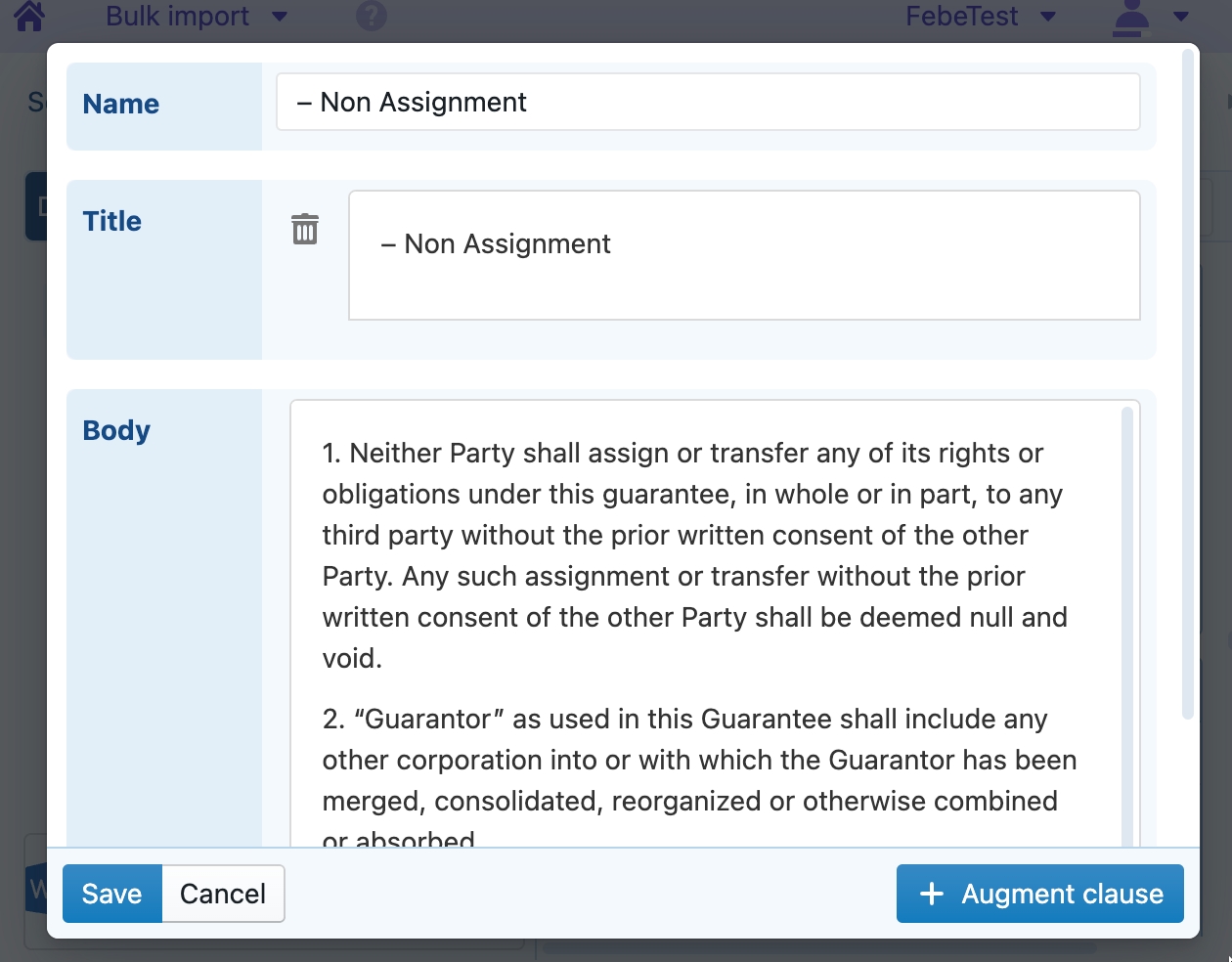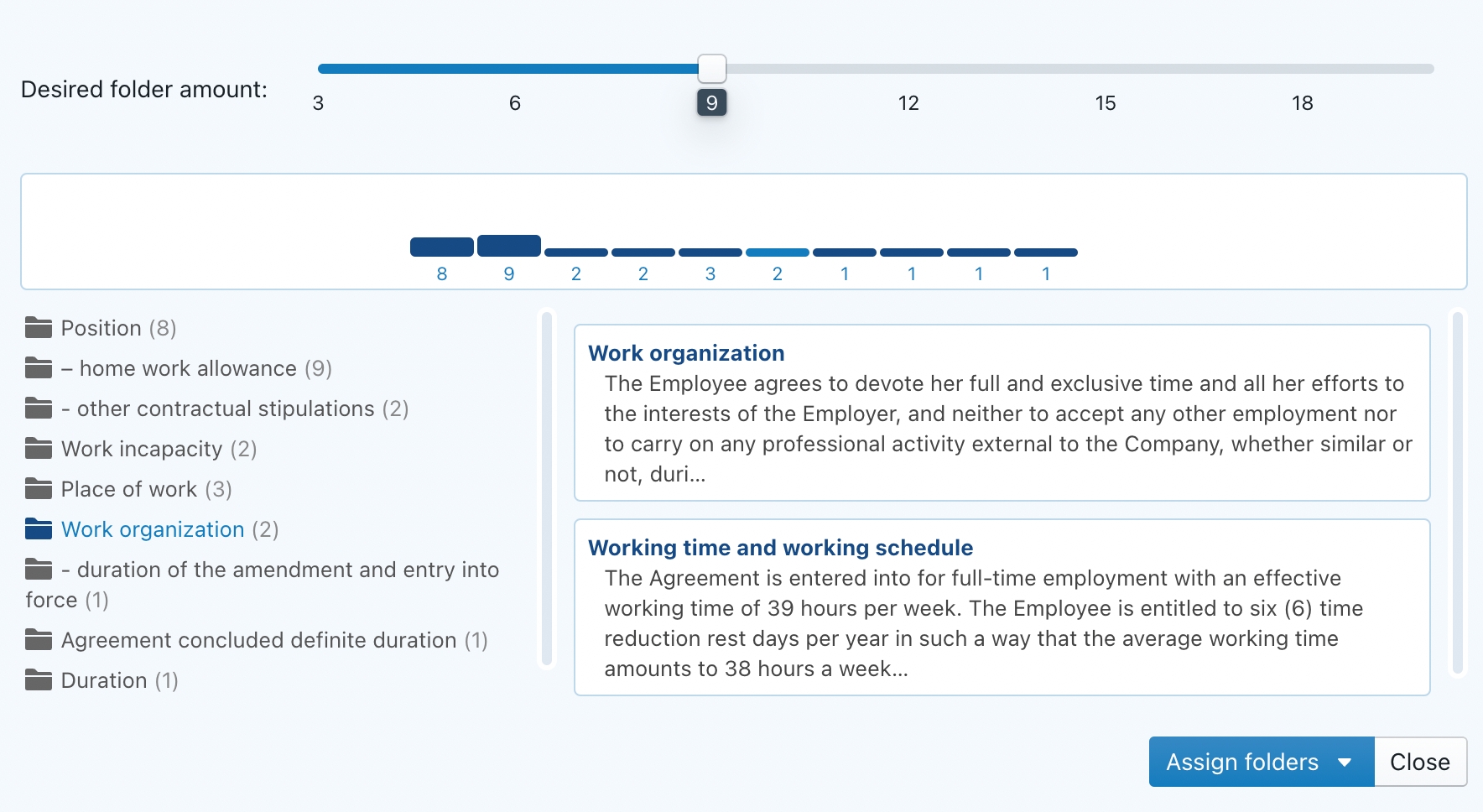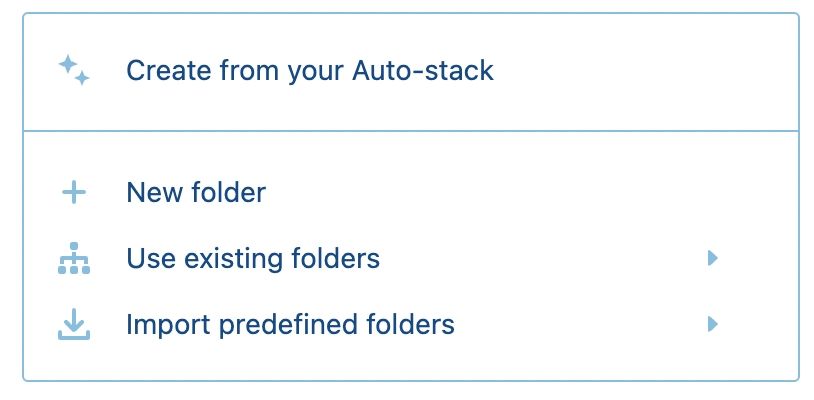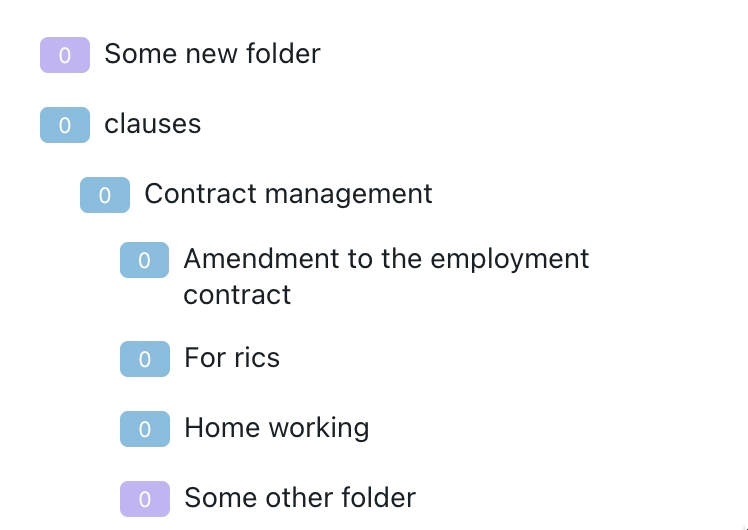Assign paragraphs to folders
Last updated
Last updated
There are two different ways to assign paragraphs to folders in order to save them in your clause library:
You can manually assign paragraphs to your folders.
You can automatically create folders on the basis of your auto- stack. The software's artificial intelligence will then assist you in assigning the paragraph sets to different folders.
A selected paragraph set (i.e., a paragraph and its associated paragraphs within the same rounded box) can be added to a folder by invoking the keyboard shortcut Shift+Enter. A dialog box will then pop up that will look as follows:
The sofware will calculate whether the selected paragraph set is sufficiently similar to clauses already assigned to folders in the current session. If so, then those candidate folders will be presented in a list at the bottom of the dialog box.
In addition, you can search through the existing folders of the session by entering one or more characters in the text box. Matching clauses will then be presented in the bottom list.
If you enter a name for a folder that does not yet exist, it will also be added to the bottom list. (This allows you to quickly create a new folder!)
Finally, recently selected folders within the session will also be added to the bottom list.
You can step through the bottom list by pressing the up/down arrows on your keyboard.
Once you have selected a relevant folder, press the Enter key on your keyboard. The selected paragraph set will then be converted into a clause and assigned to the selected folder.
Alternatively, you can press the Shift + Enter key. This will show the clause editor dialog box, where you can finetune the contents of the converted clause.
You can assign an individual clause to a different folder by invoking Shift+Enter. The dialog box above will then turn into a Move to folder dialog box instead — the mechanism for finding and selecting folders is identical.
Clauses that have been assigned to a folder can be edited directly from within the right pane by clicking on the pencil icon in the upper-right corner of the clause.
This will show the clause editor dialog box, similar to the one found elsewhere in ClauseBuddy.
When at least 5 paragraph sets are selected you can also request the software to perform the conversion in bulk. You do so by switching to the Folders tab and selecting Create from your auto-stack.
The software will then perform a semantic analysis of the selected paragraph sets. (This may take some seconds if you are converting tens of different clauses.)
You can interactively change the desired folder amount by changing the slider on the top: if you increase the amount, folders will get more specific, and the average amount of clauses assigned to each folder will decrease.
The software will display a chart of how many clauses would end up in the proposed folders, so you can visually spot whether the distribution of clauses over the folders makes sense in your legal opinion. For example, in the screenshot above, the legal expert who is importing the clauses, can probably decide right away whether it makes sense that two folders ("position" and "home work allowance") attract the majority of the clauses, while all the other folders have much less clauses.
When you have found a good distribution of folders, you can click on the Assign folders button in the bottom-right corner. The software will then convert all the selected paragraphs into clauses, create the proposed folders, and assign the clauses to those folders.
Afterwards, you can change clauses — move them to different folders, change their contents, etc. — as explained below.
Obviously, the folder distribution proposed by the artificial intelligence is merely a starting point, as this entire process involves a lot of judgement calls. (If you would give 100 clauses to 10 different legal experts and ask them how many folders they would create, and how they would assign the clauses to those folders, you would probably end up with 10 wildly different results.)
Through the Add folders popup menu in the bottom-left corner of the Folders pane, you can also create folders in bulk:
Either you can copy a (sub)folder structure from predefined folder structures per legal domain.
Alternatively, you can import your existing folder structure.
Folders that represent existing folders in your clause library will be shown in blue, instead of purple. For example, in the screenshot below, you can see a mix of newly created folders (in purple) and folders that pre-exist in the clause library (in blue).
Note that — unlike folders created manually or by copying predefined folder structures — this will not lead to new folders being created once you store the clauses into your clause libraries.
Folders created in the import mode are temporary and allow you to put everything in the right place. Deleting folders in import mode does not mean they are gone in your library as well.






